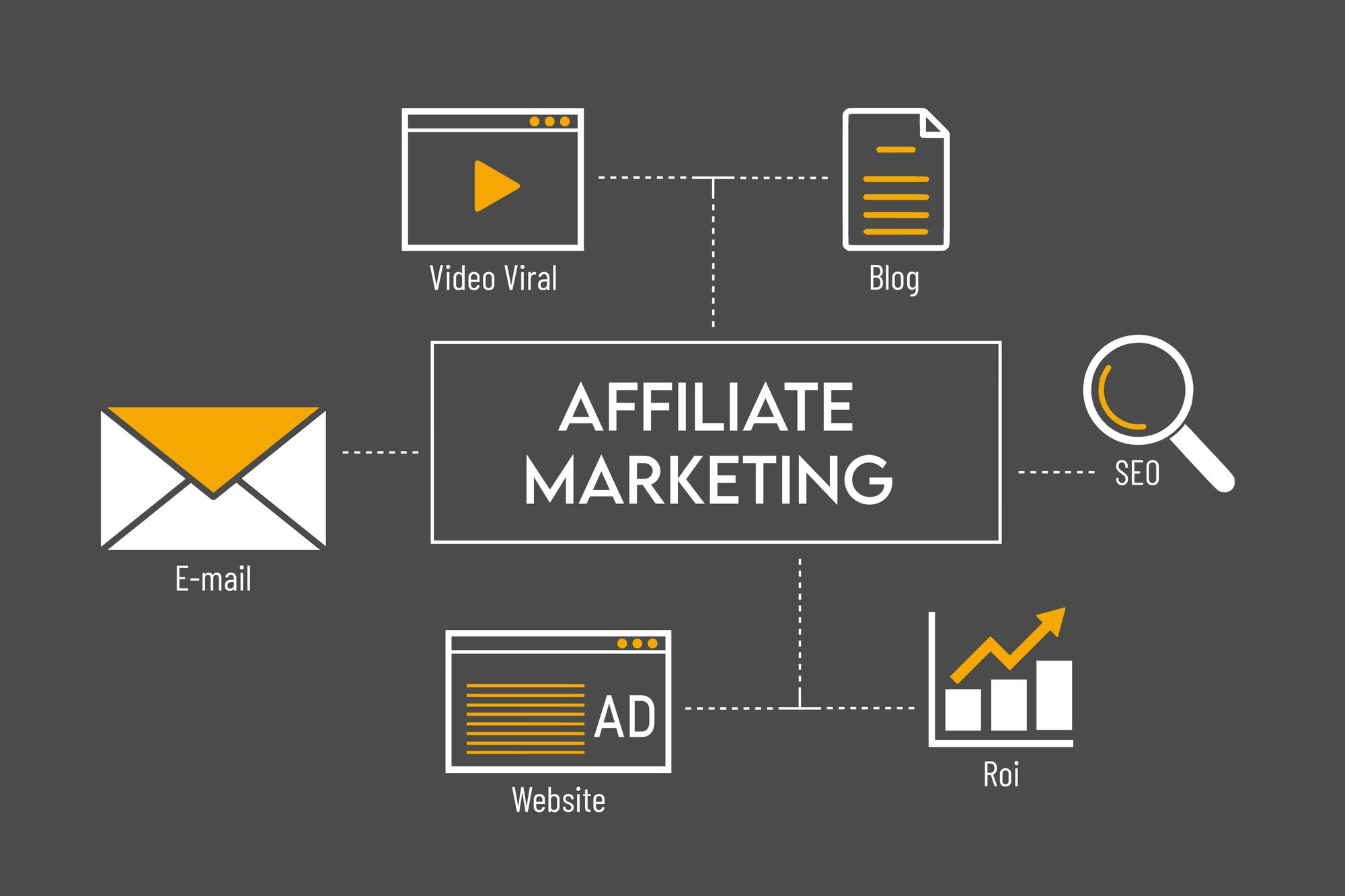Where To Promote Affiliate Links? 6 Best and Most Used Channels
Have you ever wondered why some affiliate links are well-received by users and help businesses earn thousands of dollars, whereas others don't perform well? Surprisingly, it is more about how and where to promote affiliate links than what you're offering.
Affiliate marketing has emerged as a great way of earning passive income for many businesses and individuals. A successful affiliate marketer promotes links by making the product or services of a business stand out.
They sell product/service benefits and target the audience's pain points without spamming them (mostly😅).
Let's explore more about the different ways to promote affiliate links and the best practices.
Two Ways To Promote Affiliate Links
Before knowing where to promote affiliate links, let's learn about the two different traffic sources for affiliate marketing.
1. Paid Advertising
Paid advertising, as the name suggests, involves promoting affiliate links by paying for ads based on cost-per-action (CPA), cost-per-click (CPC), and other revenue models.
It consists of a variety of traffic sources to drive high-quality traffic to your website, blog, or social media channel.
You can get paid traffic for affiliate marketing by starting a paid ad campaign on social media platforms, Google, and other online advertising networks.
2. Organic Affiliate Marketing
If you are starting from scratch and don't have a budget for paid ads, you can opt for organic affiliate marketing, which doesn't require any spending.
Most organic affiliate marketers use search engine optimization (SEO) to optimize their websites, social media posts, and blogs to appear in search results and get traffic.
Where to Promote Affiliate Links For High Traffic?

To effectively target affiliate marketing traffic, you must strategically use various affiliate marketing platforms.
Here are some channels where you could promote your affiliate links and generate traffic:
Blog Post

Creating a blog specifically to promote affiliate programs in your niche or using your existing blog for affiliate marketing can help gain the traffic you need.
At first, you have to share your unbiased opinions on topics that you have experience in to build trust and loyalty among readers. It is super important to be an authority in the space to share valuable advice with your readers.
After creating valuable content through blog posts, you can start doing SEO for affiliate marketing in your blog and direct your readers to affiliate links.
However, the main goal should still be to add value to your blogs.
You should make sure not to turn your blog into a mere sales platform by only recommending products relevant to your readers. Most bloggers use different ways to promote the links, including:
● Reviews
● Roundups
● Tutorials
● Case studies
● Comparison
● How-to guides
● Testimonials
Another key point when adding links to your blog is to naturally fit them within your content. Don't force users to click on them. Instead, let them decide if they want to buy the product or services.
Social Media

Affiliate marketing on social media expands your reach and puts you in front of a large crowd.
Using social media, you can attract traffic through multiple campaigns and different types of content based on what your audience consumes frequently.
Here's how different platforms can be used for affiliate marketing:
● Instagram: You can promote links on Instagram by adding them to the profile bio, reels, or stories.
● Facebook: One of the oldest platforms with a large number of audience, Facebook allows various promotion methods, especially effective with paid ads.
● TikTok: Since it gets high engagement through viral videos, you can integrate affiliate links into videos. You can also list your products on TikTok Shop for direct sales without leaving the platform.
● Pinterest: You can integrate your affiliate links in Pins, which is perfect for product recommendations and inspiration.
Email Marketing
Still confused about where to promote affiliate links? Keep it simple and use your email list as a traffic source. After all, the platforms can ban your accounts, can't they?
Email marketing is a reliable way to reach your audience, drive traffic to your website, and share time-sensitive offers like discounts and coupon codes.
You can also create a subscription form that's irresistible to your targeted audience and position it on your blog or landing page to capture leads.
Subscribers are looking for valuable content, so you have to provide it with each newsletter while sparingly sharing affiliate links, typically no more than one or two per email.
If you are an expert in your niche, you can even introduce an email course. This content-rich format can subtly integrate affiliate links for valuable recommendations related to each lesson.
Video Marketing
A recent study by HubSpot found that 72% of people prefer learning about products or services through video ads over other types of content. You can use it to your advantage and show your affiliate products' benefits, features, and real-life use cases through videos.
For example, a video about cooking your comfort food might include recommendations for kitchen equipment. So, just add the affiliate links to the video description and mention an advantage to getting the products specifically from the link.
Educational videos, reviews, and tutorials are especially effective for affiliate marketing on platforms like YouTube. With these videos, you will engage viewers and also provide ample opportunities to integrate affiliate links naturally.
Lead Magnets
Lead magnets are free resources given away with the intent of gathering leads. Integrating your affiliate links through lead magnets can effectively promote the products and services you're selling.
Lead magnets are a win-win. They help your audience implement what they've learned from your content and allow you to build your email list.
Lead magnets may include:
● Ebooks: Allow for in-depth exploration of topics, with affiliate links embedded in relevant sections.
● Email courses: Teach processes step-by-step which offers natural points for affiliate link integration.
● Checklists and templates: Provide actionable tools, with affiliate links adding value without overwhelming the user.
You should position affiliate links as helpful additions rather than the focus of your lead magnets to maintain trust and engagement.
Forums and Online Communities
If you want to create a buzz about a particular brand, product, or service, then there's no better way than talking about it on public forums like Reddit, Quora, and Facebook Groups.
These online communities can direct you straight to the users interested in your needs.
You can efficiently promote affiliate links on these platforms if you use them correctly. But the catch here is active participation on all such platforms. You can't just come up one day, promote your affiliate links, and expect members to click them.
You have to regularly contribute valuable insights and tips to build trust within the community. When appropriate, share your affiliate links within the context of helpful posts or responses.
If direct affiliate links are not allowed, promote your own resources that include them, such as blog posts, resource pages, or YouTube videos. Always follow the community rules regarding promotions to maintain credibility and respect within the group.
You now know where to promote affiliate links. But how to pick and choose the best affiliate traffic source?
How To Choose The Best Affiliate Traffic Sources?
There are many affiliate traffic sources, and it's not practical to promote everywhere. Firstly, it takes a lot of time. But more importantly, your target audience is not hanging out on all these platforms.
When deciding where to promote affiliate links, you must choose the ideal channels where your target audience is most active.
The following are a few helping factors to choose the best traffic sources for affiliate marketing:
● Your Audience and Niche: According to your affiliate marketing niche, you can research which type of audience will like it and go for a traffic source that has a good volume of that type in the audience.
● Cost: You have to consider your budget and assess it based on the quality, number of location targeting, and the type of affiliate marketing channels. Make sure to define your budget and ad plan before you start promotion.
● Percentage of traffic generated: Each channel has a different traffic load, so depending on your targeted audience, you have to choose the traffic source that offers a larger volume at a lower cost.
● Regulations across networks: You must check the rules and policies of the affiliate traffic sources that you're choosing to advertise on and learn what's prohibited on those channels.
AdsPower, Your Affiliate Marketing Companion!
Knowing where to promote affiliate links can help you earn substantial income (Yes, even while you sleep). You just have to be familiar with the right marketing channels.
Social media platforms like Facebook, Instagram, and Pinterest are great for reaching a wide audience.
Whereas, blogging and creating niche websites can drive targeted traffic to your links. You can even use emails and public forums to create a buzz about your affiliate product.
While you can do all that, one problem remains: account bans. They are very common in affiliate marketing, but don't worry—this, too, has a solution called AdsPower.
AdsPower is a multi-accounting and anti-detection browser that lets you manage multiple affiliate accounts while keeping them anonymous from platforms.
You can use AdsPower to create separate accounts for all affiliate marketing niches without worrying about getting banned. This also keeps things organized and tidy and has a positive impact on your campaigns.
So, sign up for AdsPower today and boost your affiliate marketing efforts with private multi-accounting.

People Also Read


